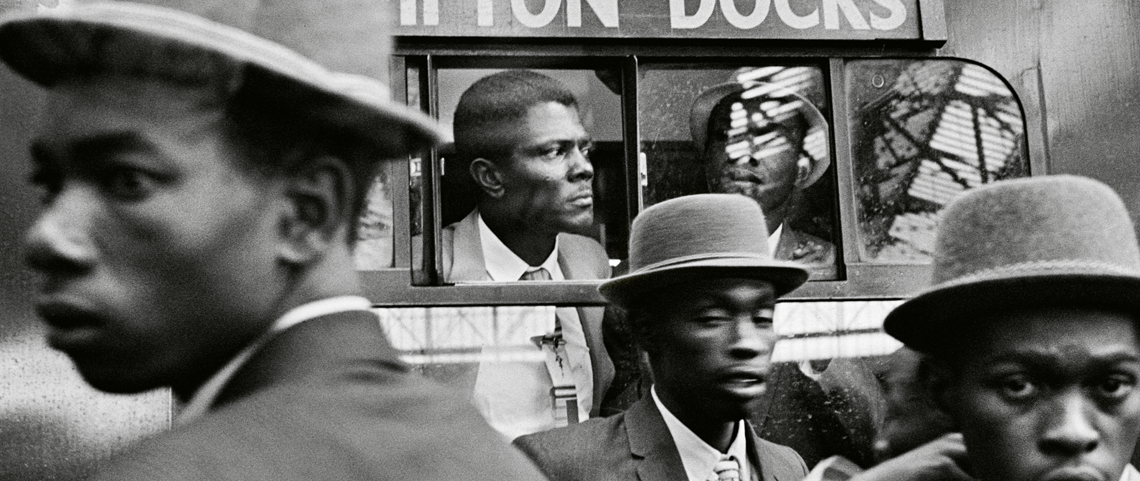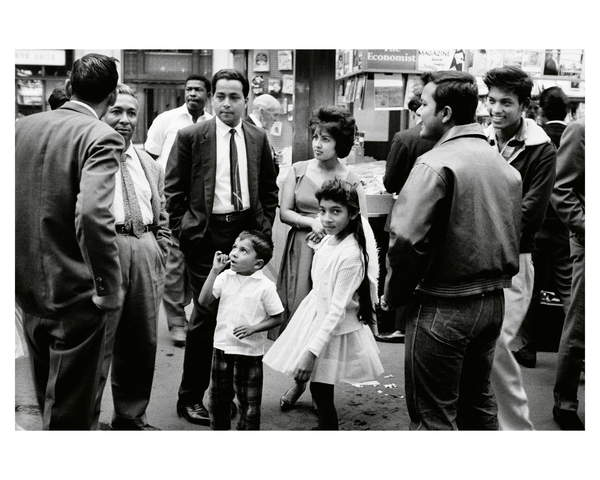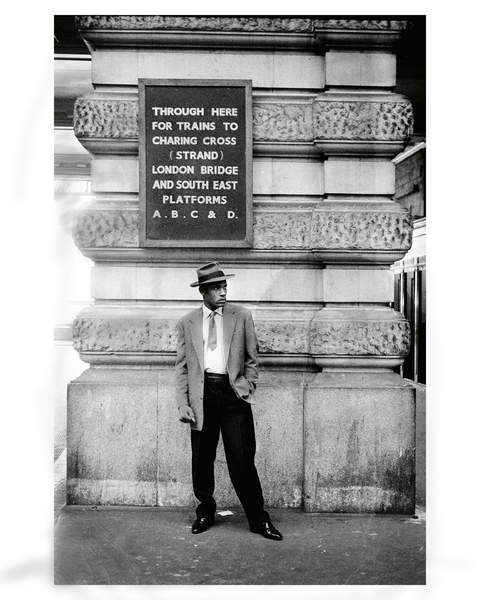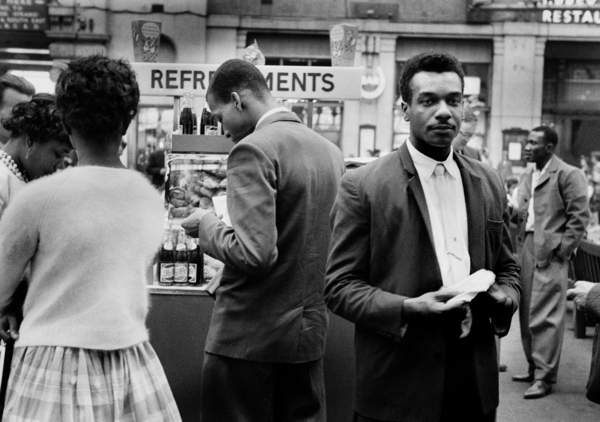
Howard Grey: Photographing the ‘Windrush Generation’
The ‘Windrush Generation’ is the name given to people who arrived in the UK between 1948 and 1971 from the Caribbean – an important time in British history. Bridgeman photographer Howard Grey was at Waterloo station photographing the arrival of some of the 1960s wave of immigrants.
The ‘Windrush generation’, as they became known, were named after the ship HMT Empire Windrush in which they originally arrived in the UK. The name that became attached to those welcomed in 1948 soon became the name synonymous with mass riots, deportation and discrimination that divided the UK. These precious photographs chronicle the first 1960s arrival of that generation who were to endure several struggles before settling for good in the UK.
After the Second World War in 1945, the UK had suffered a severe loss in its population. The Government began to encourage migrants to come to the UK in order to build the workforce back to its previous state while offering the promise of a new life in return. However, by 1948 the government began to realise the rate of immigration to the UK was too high. This, alongside the increasing amount of racism in England led to riots and many African-Caribbean people being deported. Nevertheless, people kept coming and in that, people kept fighting.
The riots seemed like civil war with the white community forming factions that would attack African-Caribbean people such as the White Defence League and The League of Empire Loyalists. Alongside the constant abuse, black people were banned from bars, churches and were even stopped from buying homes.
Through all the chaos, someone saw a precious historic event which needed to be recorded. Howard Grey was a 20 year old commercial photographer and saw the masses of people entering the country not as an outrage but as an opportunity to capture a unique moment in time. Commercial photography was a niche job at the time so Grey felt it was his duty to fill that sector of the work force as best he could. Fairly new at the role and not quite a professional, he was nervous to go seeing as there had been upset between the communities in a rather violent way. Be that as it may, he had a job to do, so he decided to take his photographs anyway.
When he entered the station he found himself pleasantly surprised by the peaceful nature of those waiting. The building was filled with people in their Sunday best as they sat and stood, with some turning to the clock with impatient apprehension. All were full of desperation; a potent mixture of anxiety and keen desire to start a new life in the best way they could given the circumstances.
As people got off the train at Waterloo station he caught them on film that wouldn’t be developed for another fifty years. These photographs display the fear, excitement and anticipation of the people in the station waiting for something new. Each face embodies a different emotion – some excited, some nervous, with others looking bored to death as they wait for their loved ones to arrive. Others present an air of aggravation as they stand in the crowded station; trapped in a fence of other restless travellers.
Howard Grey felt obligated to document this event more so because he felt sympathy for those caught within it – his grandparents were immigrants themselves. Grey belonged to a family of Jewish immigrants in their third generation. They migrated from Ukraine in order to escape the terror caused by the Russian and Ukrainian government. Grey imagined how he would feel if his immigrant family were deported and decided that he would capture that feeling he shared with African Caribbean people stepping of the train onto what was meant to be the prosperous and opportunity-rich city of London.
By 1972, the UK had restricted immigrant access to people with close family or a work permit as they were determined to keep people from entering the country from the Caribbean. However, Britain had already sustained a rather huge African-Caribbean population with 172,000 people from the West Indies in the county by 1961. This growth in foreign occupants did have positive effects. An example of this is the Notting Hill Carnival which originated from inhabitants of Notting Hill coming together and holding an indoor carnival in response to the havoc taking place around them. In contemporary culture the positive results of the uptake from the Windrush Generation are clear to see, but this would have been a far cry back in the 1960s.
Now with the pleasure of viewing these with contemporary eyes, we can see what a positive impact these people would have on London’s now famously diverse culture.






